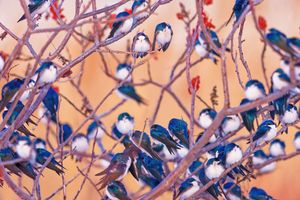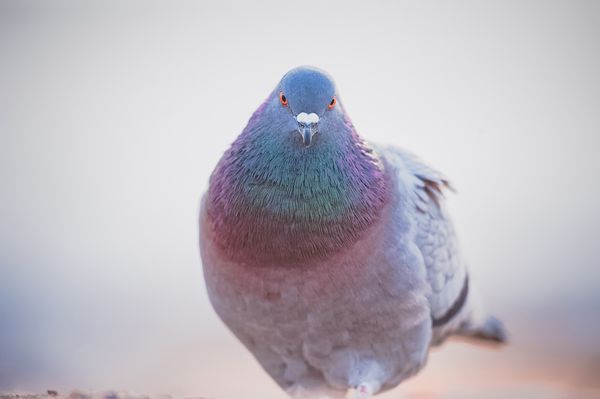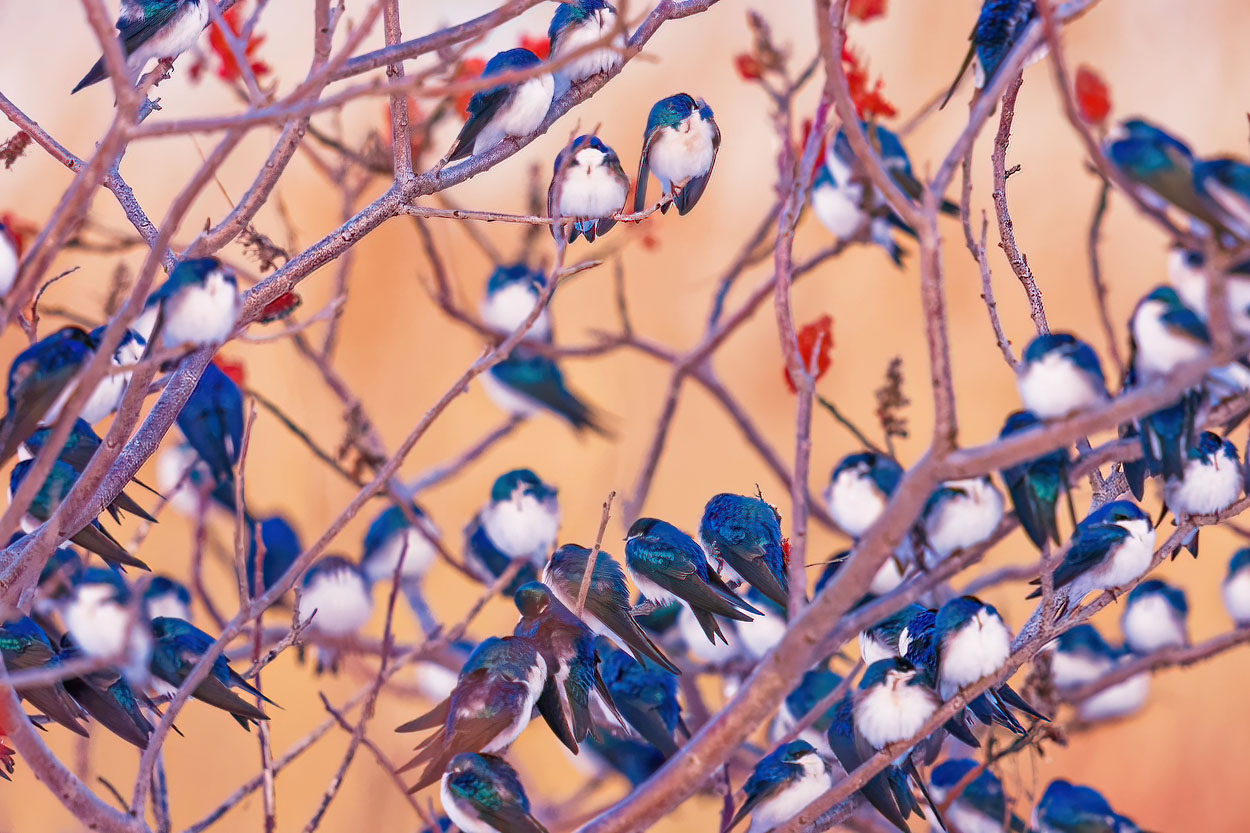 LINKED PAPER
LINKED PAPER
Predicting population trends of birds worldwide with big data and machine learning. Zhang, X., Campomizzi, A.J. & Lebrun-Southcott, Z.M. 2022 Ibis. doi: 10.1111/ibi.13045 VIEW
Everything begins somewhere
My obsession with birds started 16 years ago when I first gazed into the eyes of a fluffy Herring Gull (Larus argentatus) on the lawn of the University of British Columbia. I was completely baffled by the bird, partly because I didn’t know what species it was (I thought it looked like an enlarged pigeon but something was certainly weird about it), and also because I had never seen a wild bird of this size standing so proudly close to humans. I was fascinated.
Since then, I’ve been taking pictures of birds and learning about them. I decided that I wanted to become a wildlife photographer and biologist, and so I went to the University of Toronto to study biodiversity and conservation biology to pursue my dream. Mart Gross, one of my professors, once asked me in his office what was the top thing on my bucket list. I looked at a poster of birds on his wall, contemplated for one second, and said: “I want to know all the birds in the world.”

Figure 1 The Rock Dove, Columba livia, a bird that thrives on every continent except Antarctica. From the most common pigeon to the rarest birds, I want to know all of them, as each of them has its own right being a citizen of Earth and has a surviving story to tell.
The crossroad
Despite my passion for birds and biology, my path eventually led me to transition to a career in data science and artificial intelligence (AI). At the crossroad of my career transition, I volunteered at Bird Ecology and Conservation Ontario, a small environmental NGO in Toronto, wishing to find a way to combine my passion for birds with the AI knowledge I had. That is when the idea for this paper emerged. During my initial meetings with Andrew Campomizzi, Research Scientist, and Zoé Lebrun-Southcott, Wildlife Biologist, at BECO, I learned about the drastic bird population declines in North America since 1970, and knowledge gaps about the reasons for population declines. I immediately became interested in this topic because I knew its importance for my feathered friends. Andrew and Zoé proposed an AI investigation into population declines and I was intrigued at the prospect of using machine learning to help answer questions about bird population declines, so I started exploring right away.
Framing the problem
I looked into many online data sources to find suitable datasets to study the causes of bird population declines, and I created several Python web-scrapers overnight to collect data and get an overview of the big picture. After a few days of exploratory data analysis and preliminary modelling attempts, I quickly realised that the easiest way to attack this problem was to gather a myriad of attributes for each bird species and identify their relationship with each species’ population trend. Although our initial question was limited to the causes of bird population declines in North America, it became clear to me that we needed to conduct a global-scale big data analysis encompassing all extant bird species with as many details as possible, to avoid issues such as phylogenetic and geographic non-independence.
A global-scale study was also intriguing because I envisioned building machine learning models to predict bird population declines for any species around the world that lacked population trend information. Needless to say, exploring global population trends would allow me to indulge my biophilia by learning more about all of the birds in the world. So, I shifted my Python bots into high gear and collected 300+ attributes for all of the extant bird species in the world (~11,000 species at the time). Most of the data were downloaded from the IUCN Red List, with additional information supplied by Encyclopedia of Life and Animal Diversity Web.

Figure 2 There are many existing studies and hypotheses regarding bird population declines, ranging from habitat loss to pollution and climate change, but most correlations previously found were limited to continents or smaller regions. I wanted to see the bigger picture, understand what could be the common drivers of bird population declines around the globe, and help lead to better decision making in conservation biology with a data-driven approach.
Machine learning (in this case, supervised learning) is an example of artificial intelligence. It works by learning patterns in the data without explicit programming, and the patterns learned by the algorithm can then be applied to new data to predict an unknown attribute. I trained the machine learning model on attributes of bird species that had known population trends, so it could predict the population trends for the birds with unknown trends (based on all the other attributes of these birds).
It worked!
As our paper shows, it turns out that machine learning is capable of predicting bird population declines (on a species level) with acceptable accuracy in certain cases. Through correlation analyses, we found many significant factors (both positively and negatively) linked to bird population declines globally. Most importantly, our results showed that birds with fragmented populations, being non-migratory, frequenting forests, having long generation length, and living in tropical developing countries were all likely to undergo population declines. Many of these drivers of bird population declines are not surprising and have already been well studied regionally, but our study is the first to identify all of them on the global scale for all living bird species.

Figure 3 Global distribution of (a) declining bird populations and (b) populations that are not declining. Biodiversity hotspots such as South American and Southeast Asian developing countries with tropical forests have more declining bird populations (not only in numbers, but also in likelihood).
The reason our machine learning model could predict bird population declines based on attributes such as habitat, ecology, geography, and migration strategies, is because the underlying correlations do exist. While machine learning is powerful, it is not magic – if there is no pattern to be learned from the data in the first place, it won’t work. Furthermore, although this could be a useful tool for conservation, population trend predictions made by machine learning models have many limitations and are not a substitute for the invaluable data gathered from in-situ field surveys and monitoring. AI may be another tool in the conservation toolbox, but it cannot replace more traditional methodologies of elucidating population trends and the factors influencing them.
Take-home message
After more than two years of work, I finally have my first published paper (which is also on my bucket list) – and it’s all about birds! In this paper, we have addressed many methodologies, conservation implications, limitations, and future research directions. But in the end, both as a bird nerd and a computer nerd, I can confirm that AI will not save the birds for us – only we will! Unless we do something helpful and make a difference, the AI’s predictions are just predictions, no matter how good they are.
Image credit
Top right: © Xuan Zhang.
If you want to write about your research in #theBOUblog, then please see here.



